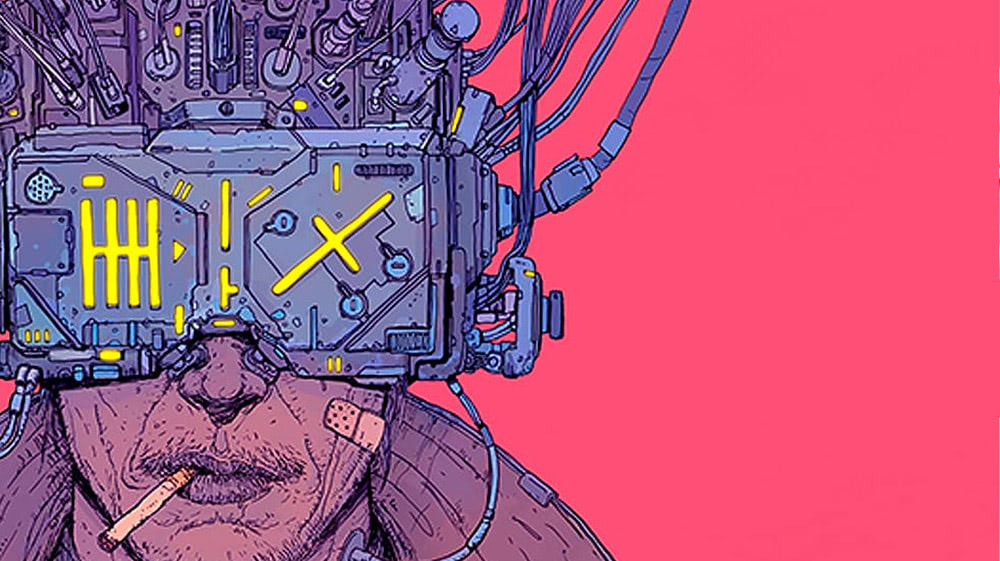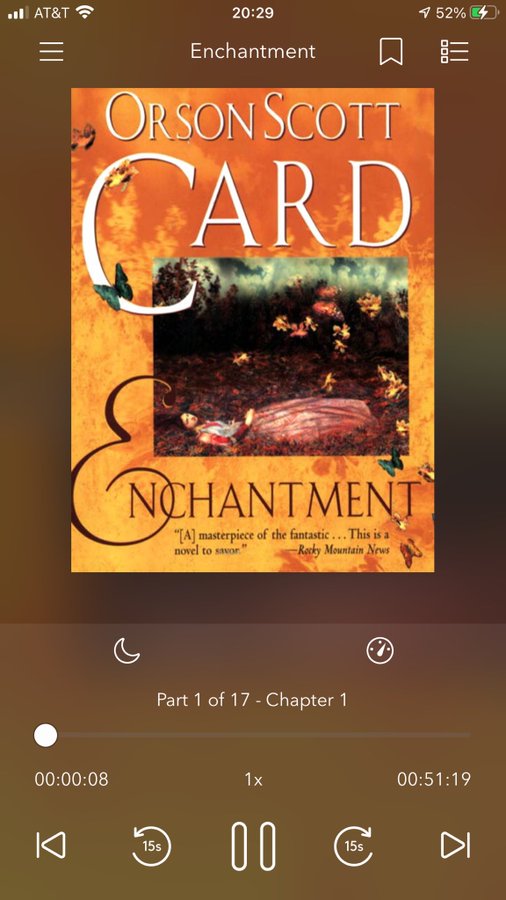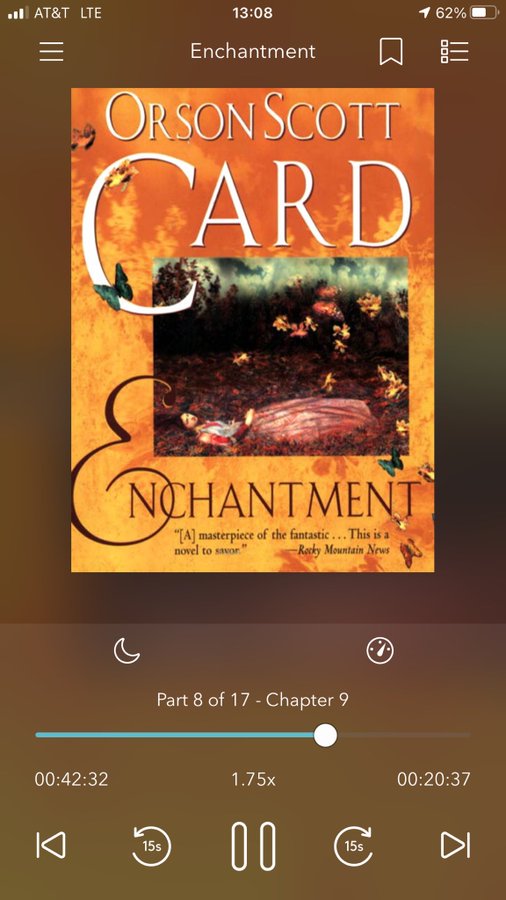Sometimes I wonder how many social democrats and Jews of all extractions—bankers, pharmacists, tailors, teachers—found their hands brushing against the paper edges of stock certificates for Audi, Bayer, Hugo Boss, Thyssen, IG Farben, Krupp. How many of them sat in cramped apartments in Berlin or Vienna, trying to reconcile their progressive ideals or ancestral guilt with the dividend checks that arrived on time? Could they have known, or did they simply not look? And if they didn’t look, was it because they couldn’t bear to, or because the alternative—a life without that income—was unthinkable?
Maybe there was a Jewish chemist in Frankfurt who believed in the socialist cause, the kind who lectured his son on solidarity and the workers’ struggle, but who also rationalized his holdings in IG Farben. “What can I do?” he might have said, folding his hands. “It’s not my factory. It’s not my Zyklon B.” Did he know? Or a Social Democratic alderman in Hamburg who wore Hugo Boss suits—tailored perfectly to his reformist speeches, perfectly stitched to stand up to the bourgeois opposition—and who privately thanked himself for his wise investment in the firm.
It’s not hypocrisy exactly, though hypocrisy plays its part. It’s survival, wrapped in capitalism’s suffocating embrace. It’s the damned problem of complicity in a world where even the innocent are investors, where justice and profit are rarely bedfellows. And I think about that, about them, because isn’t that the Jewish question, after all? Not the one history asks, but the one we ask ourselves: “What am I supposed to do when my hands are tied to the same wheels that crush me?”
And, of course, it’s never just Jews. The Germans, the Americans, the French. Everyone has a stake in the machinery. Everyone owns a little piece of the war, even the peace-loving ones, even the idealists. Maybe especially the idealists, because they need that stake to keep on dreaming their dreams.
And me? What would I have done if someone handed me a share of Bayer in 1925, a tidy inheritance from an uncle with no children, just chemicals in his veins and ambition on his mind? Would I have burned it in defiance or tucked it into a portfolio, knowing it might pay for my children’s education, my wife’s medical bills, my own peace of mind in an increasingly unpeaceful time?
I’d like to think I know the answer. But that’s a lie, isn’t it? We never really know what we’d do—not until the papers are in front of us, not until the money is in our hands, not until we feel the weight of history bearing down on us like a shareholder’s meeting we can’t refuse to attend.
Did the Captains of Industry know? Did the men who sat behind the polished mahogany desks of Audi, Bayer, Hugo Boss, Thyssen, IG Farben, and Krupp, men who dressed in finely tailored suits and polished their egos with the same attention they gave their portfolios, know that the great, shining machine of industry they were feeding would, in time, begin to chew on its own? Perhaps not in so many words. Perhaps it was a matter of not knowing as much as it was not asking. The slow, almost imperceptible gnaw of complicity that runs like a thread through the fabric of a company’s rise and fall, through the lies we tell ourselves while others take the brunt of it. But in the quiet corners of their minds, buried beneath layers of ambition and arrogance, could they have known that the very system they were financing—the grand spectacle of global capitalism, of shareholder value, of industrial might—was a beast that would eventually devour even the hands that fed it?
Perhaps they did. Perhaps some of them saw it coming, the great collapse, the inevitable breaking point. But what choice did they have? Could you be a player in a system so vast and powerful and still hold on to your purity? Could you climb to the top of a mountain of capital built from the ashes of others’ suffering and still look down without a touch of pride? Could you gaze at your dividends, the returns on your investments, and not see the hand of history drawing ever closer, a hand that might one day slap away your carefully constructed facade?
No, they didn’t know, not in the way one knows the end of a novel, the way you know that the last chapter will arrive before too long. It was a slower process—an accumulation of small decisions, of overlooking the darker corners, of pretending the rot was someone else’s problem. IG Farben’s contracts with the Nazis, Krupp’s steel feeding the war machine, Bayer’s patenting of chemicals—these were just facts of doing business, weren’t they? They were the necessary costs of progress. A price paid for the bright future. In the margins, somewhere between board meetings and champagne toasts, they told themselves that the world was a place where winners win and losers lose. They were simply winners.
There’s a cruel irony in it, of course. Because even as the foundations of their empires began to crack, they clung to their faith in the system, even as the system turned on them. They thought, as all men in positions of power think, that they could control it. That with enough maneuvering, enough strategy, enough money, they could ride out the storm. They were wrong. But of course, by the time they realized it—when the cracks were too deep and the storm had already broken—their wealth had become as fragile as the paper it was printed on.
And so it goes.
The Jew owns shares in IG Farben. The teacher owns shares in Bayer. The Social Democrat owns shares in Audi. They own them reluctantly, sure. They own them because a cousin said it was a sound investment, because a neighbor swore the yield was better than war bonds, because some analyst with a reassuring face on the radio promised dividends as sturdy as the Reichsmark. They own them not because they love what the companies produce, but because everyone owns something, and better to own a piece of progress than to be left out entirely.
But what are they really buying? IG Farben isn’t just a chemical company. Bayer isn’t just pharmaceuticals. Audi isn’t just cars. They are machines on sliding scales of entropy, machines dressed up in the finery of industry, their factories humming with the energy of collapse. These companies don’t just produce goods—they go from raw materials to heat death. They extract, they exploit, they expand, and in the process, they wear down everything: workers, resources, the very society that props them up. Every share is a vote of confidence in the machine of entropy. Every dividend a reward for feeding the beast that devours us all.
The system is designed for heat death. It’s not an accident, not some tragic malfunction. It’s the design. Progress doesn’t run on innovation or ingenuity; it runs on entropy.
The concept of heat death is simple, almost banal, but its implications are vast and unyielding. It begins with a law, one of the few laws that govern the universe without exception: entropy always increases. This is not a law of man, to be bent or debated. It is a law of nature, universal and absolute, indifferent to our desires or fears.
Imagine a system—a room, a planet, a galaxy. In it, energy moves like water spilling from a higher to a lower place. Heat flows from the hot to the cold until there is no difference, no gradient. At first, this is productive, even vital: the flow of energy fuels stars, sustains life, and drives machines. But the same process that creates order—by burning fuel or building structures—inevitably creates disorder elsewhere. The ashes, the waste, the broken pieces—these are entropy. Slowly, inexorably, the system approaches equilibrium, where no more energy flows, and nothing changes.
On the scale of the universe, this means that the stars will burn out, one by one. The galaxies, which now swirl in splendid motion, will become cold, diffuse clouds of gas. In time—unimaginable spans of time—there will be no more movement, no more light. The universe will become a uniform, silent void. This is heat death: not fire and fury, but the absence of both.
What is unbearable about this idea is not its inevitability but its finality. The universe, in its birth, promised so much: complexity, beauty, possibility. And yet, written into its very fabric is the promise of its own dissolution. Entropy is not merely a force of nature; it is a force of betrayal. What builds also destroys, and the greater the structure, the greater the collapse.
Even we, in our small lives, see this mirrored everywhere. The machines we build to sustain us wear out. The systems we create to organize ourselves decay into corruption. The fire of human ambition burns, yes—but it also leaves ashes. We dream of progress, of permanence, but in the end, everything succumbs to entropy.
What then can be done? Nothing. The laws are immutable. And yet, perhaps there is some consolation in understanding. To know the law of entropy is to know the truth of existence: that all things are temporary, and that within this temporary nature lies their meaning. We do not fight entropy to win; we fight it to live, for as long as we can, with as much grace as we can muster.
What they did not understand, or perhaps did not wish to understand, was that the heat—the very heat that powered the engines of production, the machinery of life itself—was not a promise of life, but a prelude to death. The machine he had helped to build, like all machines, was an agent of entropy. Not the sudden, violent collapse of a great empire, not the crash of a factory, but the quiet, slow death of all systems, the unrelenting expansion of disorder. This was not the collapse of one man’s dream, or the failure of one system—it was the universal condition of things. Heat death was in the machine long before he ever invested his faith—or his shares—in it.
The machine knew this, of course, in ways that its creators never could. The gradual acceleration of decay, the increasingly complex forms of its demise—the system that promised life did not know how to give it, and thus, it only ever devoured. But there is no steering entropy. Entropy does not heed the will of men. Entropy is not a force to be bought or sold. It is the price of the universe itself—the price of every system, every plan, every certainty. No matter how fine the mechanism, no matter how polished the machine, it is bound to the same finality: the dissolution of all things into an unstructured, featureless state. The machine that had promised him a future would deliver none. In the end, he was not an owner of shares, but a shareholder in oblivion.
And so he sat, at his desk perhaps, or at the table of some meeting, eyes fixed on the horizon of history, unaware that the very thing he had pledged his loyalty to—the thing that had promised him security, comfort, continuity—was the very thing that would, inevitably, turn its machinery inward and consume him, and all those like him.
The Social Democrat with their earnest morality, the Jew with their scruples, the teacher with their quietly ethical heart—all of them believe they’re different. That their investment is reluctant, that their participation is marginal, that they are outsiders in the system they profit from. But there are no outsiders. Once you own shares, you’re inside the machine, and the machine is entropy.
The collapse isn’t a bug; it’s the system’s final, perfect feature. The same industry that builds wealth also builds collapse. The shareholders think they can stand apart, that when the system devours itself, they’ll be spared, standing tall on a mountain of profits. But they’re wrong. Entropy eats everyone in the end. And it saves the shareholders for last, savoring their illusions of immunity, their desperate belief that they’ll somehow escape the inevitable.
DRESSING ENTROPY IN HUGO BOSS
Entropy is the ultimate shapeshifter. Today, it wears the sharp tailoring of Hugo Boss uniforms, medals gleaming like a carnival trick, its shoulders broad and its authority unquestioned. But this is just the latest costume. Entropy has been in disguise before: sometimes it drapes itself in the gilded robes of monarchy, at other times in the starched collars of Enlightenment rationalism, or the red banners of revolution. The costume changes, the slogans change, but the fundamental fact remains—Entropy is still Entropy. No matter how shiny the veneer, no matter how polished the facade, the cracks are already there, running invisibly beneath the surface.
Humans have a knack for dressing up their decay, for putting lipstick on the inevitable. We build systems, we erect ideologies, we manufacture empires, and then we place Entropy at the center of it all, decorating it with ceremony and pomp as if to ward off the truth of its nature. The uniforms are meant to inspire confidence, to convey permanence, but they do nothing to stave off the collapse. Entropy doesn’t care about uniforms. Entropy eats uniforms for breakfast.
It’s a sick sort of comedy, isn’t it? We design systems to fight the forces of chaos, but we build into them the very seeds of their undoing. We invent new costumes to dress up the old monster, thinking maybe this time we’ve outsmarted it, maybe this time Entropy will play by our rules. But Entropy doesn’t play. It just waits.
In the end, the uniform is meaningless. Whether it’s the imperial purple of Rome or the mechanized efficiency of modern industry, Entropy always wins. It is the true constant, the quiet devourer behind every proclamation of progress and power. And yet we keep decorating it, as if a bit of gold trim might turn the tide. As if a new name, a new flag, a new uniform might trick the untrickable.
And so, as the once-great men in their now-wrinkled suits and ties watched the world burn, they discovered something else that nobody likes to talk about—when it all goes up in flames, nobody’s standing on top anymore. Nobody gets to win. They were just cogs in a wheel.
The Social Democrat owns shares in Volkswagen. The Jew owns shares in Audi. The teacher—mild-mannered, bespectacled, grading essays about the moral arc of the universe bending toward justice—owns shares in IG Farben. This is not hyperbole; this is history. These are facts. They didn’t buy into Nazi uniforms or Zyklon B. No, they bought into progress. Into a system that promised efficiency, productivity, order. What could be more innocent, more ordinary, than owning a piece of a well-run machine?
<>
The machine wasn’t broken. That was the worst part. It was humming along perfectly, like a well-fed beast, doing exactly what it was designed to do: chew up the world and spit out ash. People kept talking about fixing it, but no one had the guts to admit it wasn’t broken at all. It just didn’t care about them. It never had.
The funny thing about machines is that they’re supposed to make life easier. And they did, for a while—until everyone realized the machine wasn’t running on oil or electricity. It ran on people. You could grease its gears with sweat and hope and maybe even a little love, but sooner or later, it wanted bones. And it always got them.
People at the top didn’t see the problem. Why would they? The machine worked for them. It gave them everything they could possibly want—money, power, bigger yachts, smaller waistlines. Every time the beast coughed up a new disaster, they just threw another party. “It’s just business,” they said, sipping cocktails made from the tears of the damned.
Meanwhile, the rest of us kept turning the crank, pretending we weren’t the fuel. We told ourselves we had no choice. The machine needed us, and we needed the machine. Sure, it ate a few of us now and then, but that was just how it worked. Progress always comes at a price, right?
Here’s the kicker, though: we knew better. Deep down, we all knew. The machine didn’t need to run. It never did. But stopping it would mean admitting we’d been suckers all along. And nobody likes being a sucker.
So we made excuses. We called it entropy, the natural order of things. The universe is falling apart anyway, right? Might as well enjoy the ride. But entropy doesn’t need our help, does it? It’s perfectly capable of wrecking everything on its own. We just speed things up because we’re impatient. Or maybe because we’re scared.
<>
The thing about jumping off the machine is that it always feels like the wrong time. The gears are grinding, pistons pumping, the whole thing vibrating like it’s alive, and there you are, clutching the edge, staring at the mess of parts below. The other operators look at you like you’ve lost your mind. “You can’t jump,” they say. “You’ll get chewed up in the gears. Or worse, you’ll end up in the scrap heap.” Nobody seems to notice the machine is falling apart—or that it’s always been falling apart.
But the truth is, jumping off is easier than they make it sound. The hard part isn’t the jump. The hard part is convincing yourself that you don’t need the machine. It’s realizing that every promise it made—of progress, of purpose, of some great outcome—was just noise. It was all designed to keep you cranking levers, pulling switches, and feeding it more fuel. Once you see that, really see it, the grinding metal below stops looking so terrifying. Sure, you might take a few bruises on the way down, but at least you’ll be free of the endless clanking that’s deafened you for years.
Of course, the machine doesn’t stop for deserters. Once you’re off, it keeps roaring forward, its gears turning without pause. And that’s the punchline, isn’t it? The machine doesn’t care that you’re gone. It never cared. You were just one more cog, easy to replace. And while that truth stings, it’s also the best feeling in the world: knowing you’re free to walk away, to start building something of your own—something that doesn’t grind people into dust.
But the machine was entropy. Always entropy. System-entropy, wave-entropy, market-entropy. Whatever you called it, it wasn’t designed to spare its own architects, let alone its investors. Yet they believed. They believed in their special exemption, their clever foresight. The collapse was for someone else—those other investors, those other shareholders, the poor fools who didn’t know how to hedge, who weren’t smart enough to see where the world was going.
So you jump. The air rushes past, the noise fades, and then—wham. You hit the ground. Your knees buckle, your hands scrape the dirt, but you’re alive. For the first time in what feels like forever, the noise is gone. The world is still. You look back at the machine, its smoke trailing into the distance, and realize it wasn’t the gears you were afraid of—it was the silence that came after.
What makes it worse, what makes it unforgivable, is that you knew. You knew what Volkswagen built, what Farben manufactured, what Krupp supplied. You knew, and you told yourself it didn’t matter, because what mattered was the system itself—the unstoppable force of progress, the indomitable march of capital. Entropy wrapped itself in precision engineering and quarterly reports, and you convinced yourself that it was something else entirely. Something clean. Something you could benefit from without ever being touched by the blood it spilled.
And when the system collapses, it collapses for you too. It devours you last, not out of mercy but because you taste the sweetest. You, the self-aware shareholder, the reluctant participant, the one who held your nose while collecting dividends. The machine feeds on your denial, your smugness, your belief that you stood apart.
The world is still, as if you’ve stepped into a void where sound was never born. You look back at the machine, its smoke thinning against the horizon, and realize it wasn’t the grinding gears that filled you with dread—it was the immensity of what lay beyond them. The silence stretches, vast and infinite, a space too big to hold onto and too deep to escape. And yet, that vastness is yours now. It wasn’t the gears you feared, but the quiet that comes after. That quiet isn’t emptiness; it’s potential—the first step toward something unbound and true.
And so it goes.







